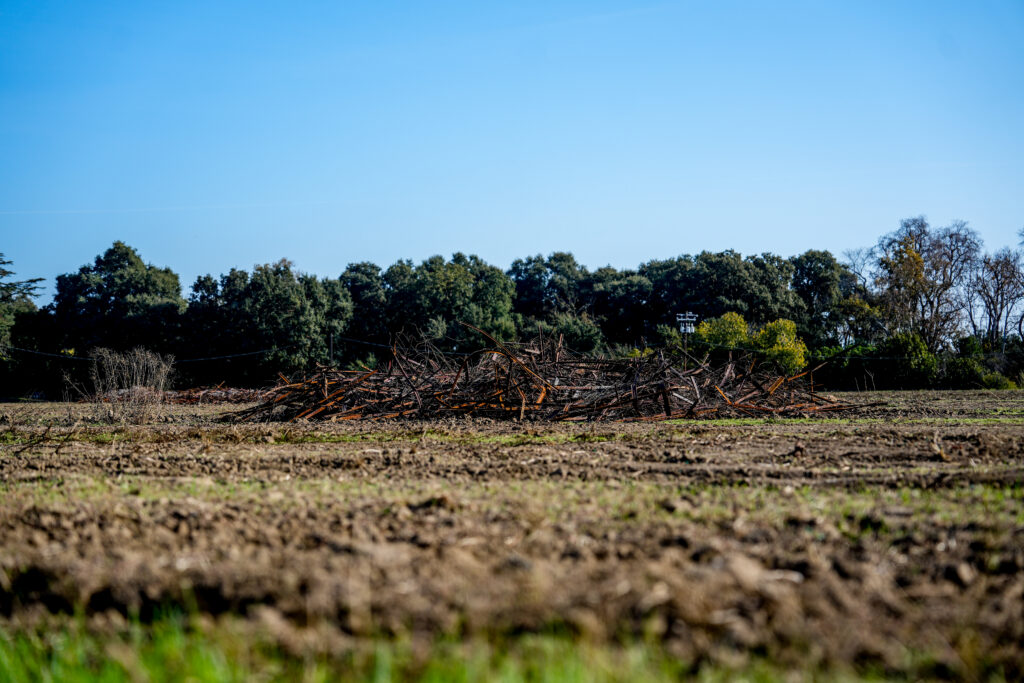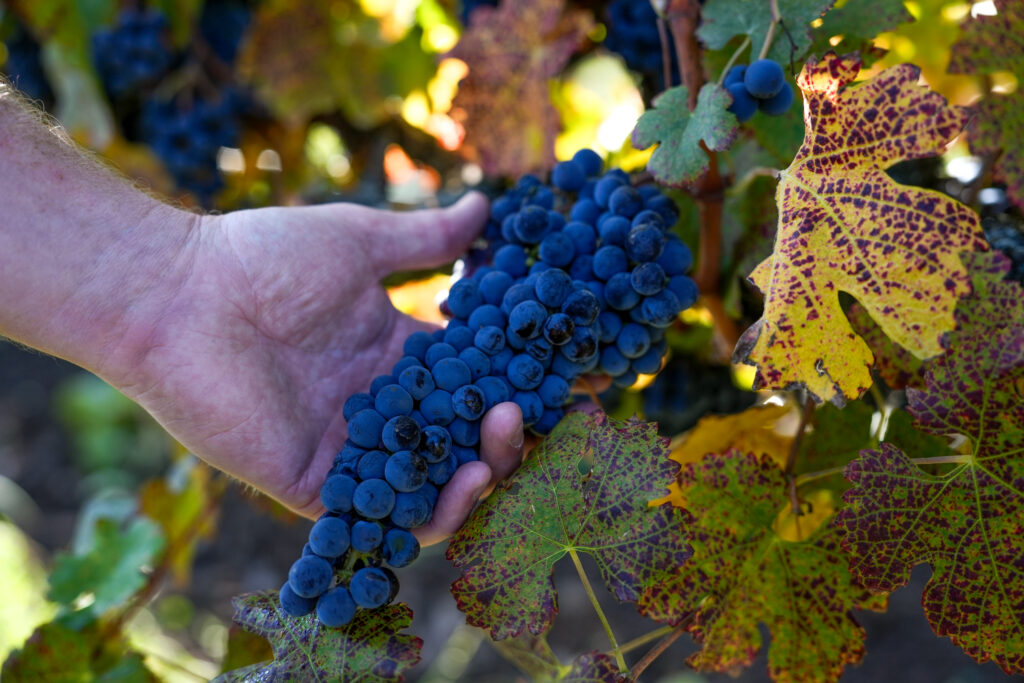The Abridged version:
- Yolo County wine grape value fell about 20% in 2024, according to the county crop report.
- Local growers say they’ve had to rip up vines and find ways to cut costs.
- Changing consumption habits and decreased demand have paired with tariffs to hurt the industry.
Last year, Silt Wine Co. had its worst grape harvest ever. This year, it happened again.
“We’re pulling out 20% of our vineyards this year, and I’m not the only one,” said David Ogilvie, fourth-generation Clarksburg farmer and director of production at Silt.
Ogilvie’s vineyard is one of many Yolo County operations contending with a statewide slump in demand for wine. Yolo County wine grape value fell about 20% last year, according to the county’s latest crop report, submitted to the board of supervisors on Tuesday. Between contract shortages and drop in prices, growers face a precarious financial situation, “resulting in unharvested vineyards and the removal of wine grapes.” Some growers are downsizing or finding other ways to cut costs.
“When you’re at the end of your season and last year the winery paid you $800 a ton for your chardonnay and this year, they come to you and they say ‘yeah, we’ll buy it for $250 a ton,’ as a farmer what are you supposed to do?” Ogilvie said.
The answer for some has been to pull out swaths of older, less productive grape vines.
“These are heritage, older blocks that are making beautiful wines,” Ogilvie said. But with prices so low, it’s almost impossible to make a profit on low-yielding vineyards. “You just have to make the hard decision to pull them out.”

Habits, competition and tariffs
The sluggish state of the wine industry can be attributed to a handful of factors.
Humberto Izquierdo, agricultural commissioner for Yolo County, said increased competition from other alcoholic beverages and changing consumption habits have driven down demand for wine grapes statewide.
“In general, wine grapes are not doing well,” he said. “It’s across the board from high-end Napa grapes to other growing regions.”
But Izquierdo also thinks that new federal policies stand to adversely affect the domestic wine market.
“It’s going to be hard to quantify, but I think there’s going to be an effect as far as retaliatory stuff,” he said. “Tariffs for French wine go up and California wine gets a retaliatory effect.”
Ogilvie agreed with that assessment.
“Our largest export market is Canada, and Canada just doesn’t want to buy American anymore,” he said. “Unfortunately, that all rolls downhill to farmers.”
Trying something new
For the time being, Ogilvie and other grape growers are looking for creative ways to make up some of the cost. Silt is now producing high-end grape juice with some of its wine grapes, a product that is much cheaper to produce than alcoholic wine.
In fact, along with canned sparkling grape juice, Silt has started producing juice boxes for kids at Sacramento City Unified, River Delta Unified, Yolo County and Lodi schools.
Ogilvie said the kids love it, because wine grapes have great flavor. He’s optimistic about that part of Silt’s business, but it’s not a permanent solution to the challenges the winery is facing.
Eventually, as more vines are pulled and less wine is produced, Ogilvie said he thinks that supply will better reflect demand and the market will recover. But that’s likely to take years. Until then, many Yolo County grape growers will shoulder the losses.

Daniel Hennessy is a reporter covering Yolo County at Abridged.
